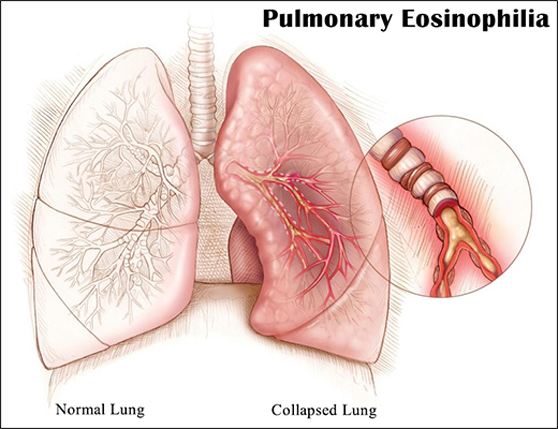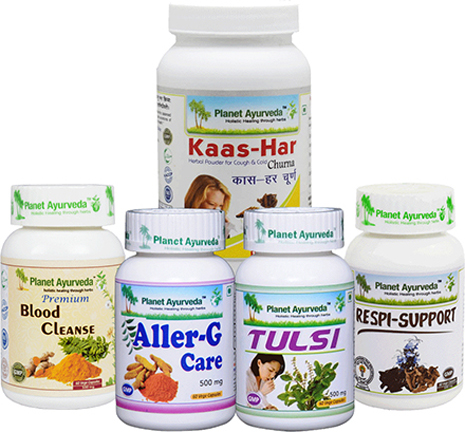An Ayurvedic View On Best Foods for Healthy Lungs
Abstract
The lungs are the primary respiratory organs in humans and most other animals, with the exception of a few snails and a few fish. Mammals and the majority of other vertebrates have two lungs, one on either side of the heart, close to the backbone. They carry out the respiratory system’s gas exchange function, which entails transporting oxygen from the air into the bloodstream and releasing carbon dioxide from the bloodstream into the atmosphere. The pleurae, which are thin, smooth, and moist, decrease friction between the chest wall and the lungs during breathing, enabling the lungs to move easily and effortlessly. Both the left and right lungs are present in humans. They are located in the chest cavity, known as the thoracic cavity. It is important to keep them healthy. In this article, we discuss some of the best foods for healthy lungs.
Introduction
The respiratory system, which is the network of organs and tissues that allows you to breathe, is largely made up of the lungs. The chest, also known as the thorax, has two lungs, one on each side. The region of the body between the neck and the abdomen is known as the thorax.
Right lung
The superior, middle, and inferior lobes make up the three sections of the lung on the right side. In addition to being bigger than the left lung, it is shorter. Pleural tissue serves as a protective layer over both of the lungs.
Left lung
The superior and inner lobes of the left lung are separate organs. Since the heart is located where the left lung’s middle lobe would be, the left lung is smaller than the right. The cardiac notch, which is where the heart fits, and the lingula, which is an extension of the superior lobe, are two features of the left lung that the right lung lacks.
Common Conditions and Disorders
There are several distinct lung diseases. Some are minor and transient, while others are more serious and chronic.
- Asthma
- Bronchitis
- Asbestosis
- Bronchiectasis
- Chronic obstructive pulmonary disease
- Croup
- Cystic fibrosis
- Influenza
- Mesothelioma
- Lung cancer
- Pulmonary fibrosis
- Pneumonia
- Pulmonary nodules
- Tuberculosis
- Respiratory syncytial virus
Sign and Symptoms of Lung Condition
- Chest pain
- Shortness of breath
- Cough
- Wheezing
- Fatigue
- Swelling in the ankles and feet
How Does Diet Affects Lungs
Inflammation is one way that nutrition can have an impact on lung health. Red meat, soda, and refined carbs are examples of foods that trigger inflammation in the body. Inflammation is associated with the formation of many diseases, including COPD and other lung conditions.
Some Best Food for Healthy Lungs
Eating a wholesome, well-balanced diet can significantly boost your body’s strength, particularly your lungs. To keep your lungs healthy, seek a mix of foods from each food group. Here are some examples of foods to eat, as well as quitting smoking and other lung-friendly behaviours, to maintain your lungs in peak condition.
Apple
Apples, and apple skin in particular, contain the antioxidant quercetin, which has been demonstrated to reduce lung inflammation and benefit those suffering from lung conditions like COPD. Additionally, eating apples and other fruits (such as bananas and tomatoes) has been shown to support the maintenance of lung function, particularly among former smokers.
Beets
Beets, a colourful root vegetable, are a rich source of dietary nitrates. When ingested, these nitrates are transformed by your body into nitric oxide, which improves lung function by lowering blood pressure, relaxing blood vessels, increasing oxygen flow, and increasing blood flow. Additionally, beets have anti-inflammatory and antioxidant effects.
Peppers
High levels of vitamin C, another important antioxidant that encourages improved lung function and reduces inflammation, are present in red bell peppers and chilli peppers. Everyone should consume the recommended daily allowance of vitamin C, but smokers should do so even more because they have lower vitamin C levels than non-smokers.
Leafy Greens
Many different types of antioxidants, including vitamin C and carotenoids, are found in leafy green vegetables like Swiss chard, kale, and spinach to help prevent inflammation. Lung cancer risk is lowered by eating enough carotenoids, which are also found in many fruits, vegetables, and tomatoes.
Legumes
High-fibre legumes like beans, peas, and lentils have been shown in one study to improve lung function. Another study discovered that dietary fibre consumption has a “protective effect” on both smokers and non-smokers’ lungs and lowers the incidence of COPD.
Tomatoes
Lycopene, another type of carotenoid antioxidant that reduces airway inflammation, is found in tomatoes and tomato-based products, including tomato juice. Additionally, tomatoes are a wonderful source of vitamin C. For those with COPD, lycopene may also give them a lower chance of passing away.
Berries
Anthocyanins, an antioxidant in the flavonoid family, are abundant in dark-coloured berries, including blueberries, strawberries, and blackberries. Anthocyanins have a number of advantages, including the ability to lessen lung inflammation and mucus production as well as the potential to delay the deterioration of lung function that comes with ageing.
Turmeric
Since turmeric has potent anti-inflammatory and antioxidant qualities, it is commonly used to improve general health. Curcumin, the key active component of turmeric, may be especially helpful for enhancing lung function. When compared to smokers who did not intake curcumin, high curcumin intake was linked to 9.2% better lung function.
Green Tea
Drinking green tea has several great health advantages. Epigallocatechin gallate (EGCG), a concentrated catechin, is a component of green tea. It has been demonstrated to prevent tissue fibrosis or scarring and boasts anti-inflammatory and antioxidant effects. Pulmonary fibrosis is characterised by lung tissue scarring that worsens over time and impairs lung function. According to studies, EGCG may help treat this illness.
Lentils
Magnesium, iron, copper, and potassium are just a few of the nutrients found in abundance in lentils that support lung health. Legumes like lentils are prevalent in the Mediterranean diet, which has been linked to promoting lung health.
Barley
Barley is a high-fibre whole grain that is beneficial. Whole-grain diets high in fibre have been found to improve lung health and lower the risk of death from lung-related illnesses. Two antioxidants found in whole grains, flavonoids and vitamin E, enhance lung function and prevent cellular degradation.
Conclusion
The respiratory system, which is the network of organs and tissues that allows you to breathe, is largely made up of the lungs. The chest, also known as the thorax, has two lungs, one on each side. The region of the body between the neck and the abdomen is known as the thorax. Both the left and right lungs are present in humans. Eating a wholesome, well-balanced diet can significantly boost your body’s strength, particularly your lungs. To keep your lungs healthy, seek a mix of foods from each food group. Here are some examples of foods to eat, as well as quitting smoking and other lung-friendly behaviours, to maintain your lungs in peak condition. In this article, we discussed the best foods for healthy lungs.




